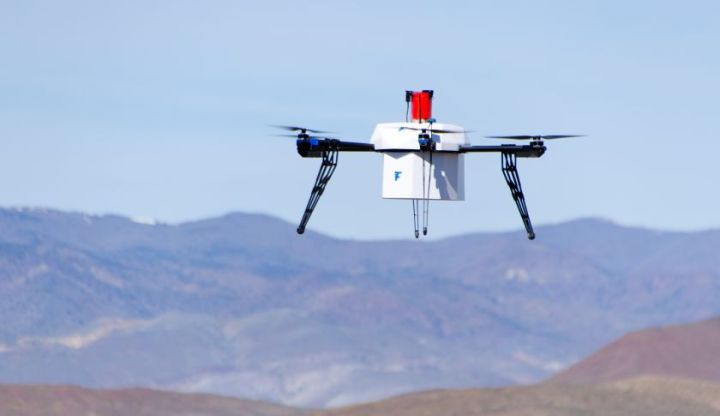
The test flight, which took place on March 10 but was revealed Friday, marks the first federally approved delivery by fully autonomous drone in an urban setting in the U.S., Forbes reported.
Flirtey’s hexacopter carried a package containing food, water, and a first-aid kit over a distance of about half a mile to a residential address in Hawthorne, Nevada, a town of just over 3,000 people.
The entire route was programmed using GPS coordinates, though a pilot was on standby in case anything went wrong. Visual observers were also in place along the route to monitor the flight.
Hovering over its delivery target, the copter lowered the package to the ground via a tether. No issues were reported, in other words, the drone didn’t crash into any obstacles or fall from the sky inexplicably. And yes, it comfortably located the correct delivery address and returned to base as planned.
Flirtey carried out a successful drone delivery in rural Virginia last year, but company CEO Matt Sweeny says this month’s successful test in an urban setting clearly demonstrates that autonomous flying machines can deliver goods to locations while navigating obstacles such as buildings, power lines, and street lamps.
An increasing number of companies – Amazon, Google, and Walmart among them – are designing drone-based delivery systems that they hope will one day offer a fast and efficient way of transporting packages to people, including anyone from online shoppers to individuals stranded in disaster zones.
While the FAA has been proceeding cautiously (or some might say “painfully slowly”) on the matter of commercial drone use, Sweeny believes his company’s previous experience, which besides last year’s rural delivery also includes similar tests in Australia and New Zealand, helped persuade the agency to green-light its latest test flight.
The FAA is set to announce a comprehensive set of rules for the commercial operation of drones in the coming months, and Flirtey hopes data from its Nevada flight will encourage the agency to look upon the idea of drone deliveries more favorably.
However, the FAA currently insists that drones must be in the operator’s line of sight at all times, suggesting deliveries by autonomous copters will only become a reality when a reliable drone-based air traffic control system can be developed. Work on such a system is already underway.


